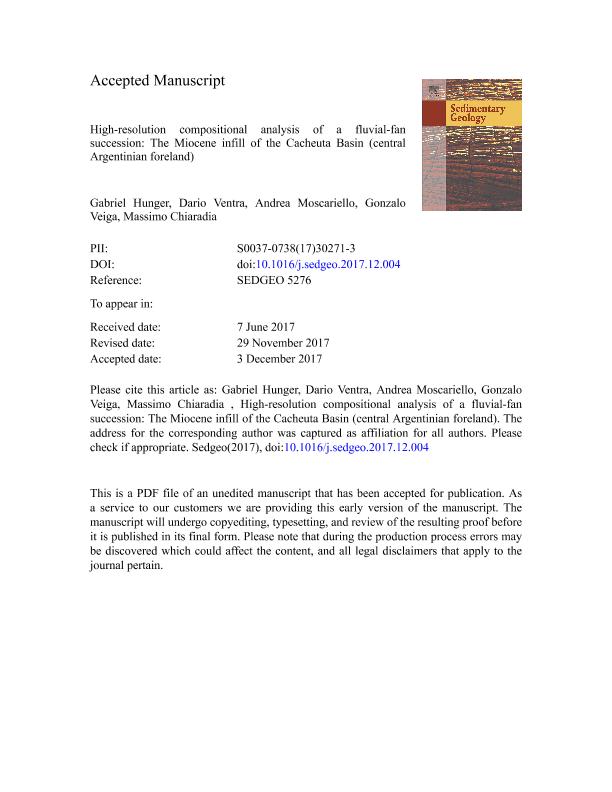Artículo
High-resolution compositional analysis of a fluvial-fan succession: The Miocene infill of the Cacheuta Basin (central Argentinian foreland)
Fecha de publicación:
12/2017
Editorial:
Elsevier Science
Revista:
Sedimentary Geology
ISSN:
0037-0738
Idioma:
Inglés
Tipo de recurso:
Artículo publicado
Clasificación temática:
Resumen
The Miocene infill of the Cacheuta Basin (central Argentinian foreland) comprises the Mariño and La Pilona formations, which record continental sedimentation related to the major phases of uplift of the Andean chain around 33° S over 1500 m of stratigraphy. Sedimentological and stratigraphic evidence suggest the succession to represent progradation of a fluvial-fan sourced from the western, orogenic margin of the foreland basin. The integration of compositional data and sedimentological observations consent to disentangle the relative roles of allogenic factors over long time scales, and to separate them from system-scale autogenic dynamics. The geochemical, mineralogical and radiogenic-isotope composition of sandstones through the succession show a progressive change in the composition of magmatic source rocks from more primitive (basaltic-andesitic) to relatively more evolved (dacitic), testifying the uplift of the western part of the Principal Cordillera, followed by the sequential eastward advance of the thrust and volcanic fronts toward the foreland basin, in agreement with established chronologies of Andean structural development at these latitudes. Sandstones from the La Pilona Formation record compositional signatures suggesting the first stages of uplift of the Frontal Cordillera. The gradual changes in the compositional signal are attributed to changing weathering conditions related to climate and to source-rock changes, related to the Miocene tectonic evolution of the Andean range. However, results suggest that the influence of large-scale allogenic factors is partly blurred by the effects of autogenic fluctuating depositional processes, especially during deposition of the La Pilona Formation. The gradual transitions in provenance and weathering signals suggest that vertical architectural and facies changes through the succession are likely related to the long-term, progradational evolution of the fluvial-system, rather than to allogenic changes in basin accommodation or climate-related sediment supply.
Archivos asociados
Licencia
Identificadores
Colecciones
Articulos(CIG)
Articulos de CENTRO DE INVEST.GEOLOGICAS (I)
Articulos de CENTRO DE INVEST.GEOLOGICAS (I)
Citación
Hunger, Gabriel; Ventra, Dario; Moscariello, Andrea; Veiga, Gonzalo Diego; Chiaradia, Massimo; High-resolution compositional analysis of a fluvial-fan succession: The Miocene infill of the Cacheuta Basin (central Argentinian foreland); Elsevier Science; Sedimentary Geology; 12-2017; 1-83
Compartir
Altmétricas




